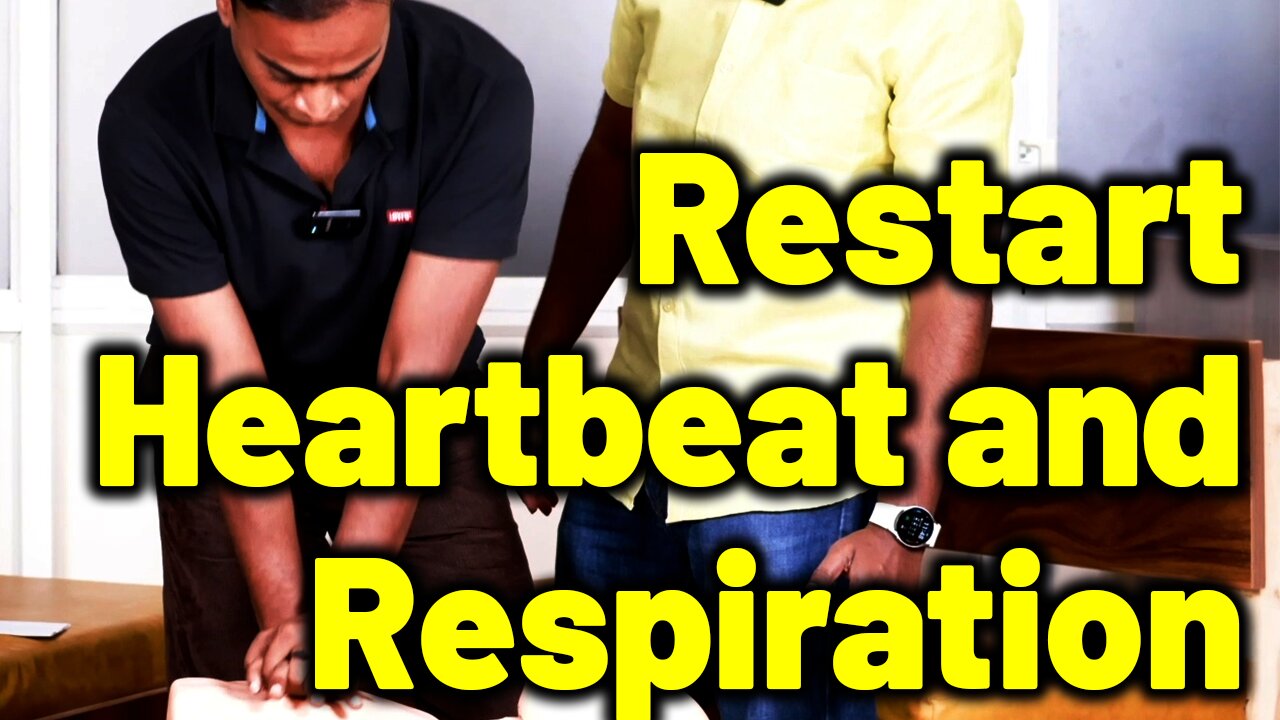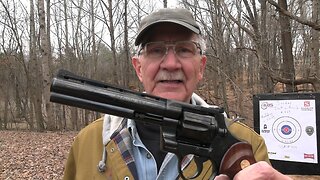Premium Only Content

How to Reactivate Heartbeat and Breath ? | Dr. Bharadwaz | Dr. RanjithKumar
Program
Health Authentic
true health information
Expert | Latest | Honest
About Video :
Cardiopulmonary Resuscitation (CPR) is a life-saving technique used in emergencies when someone's heartbeat or breathing has stopped. It involves chest compressions and rescue breaths to maintain circulation and oxygen flow to vital organs until professional help arrives. Key steps include checking responsiveness, calling emergency services, performing chest compressions at a rate of 100-120 per minute and a depth of 2 inches for adults, and using an Automated External Defibrillator (AED) if available. Immediate CPR can double or triple survival chances.
Questions Addressed :
What are the key steps in performing CPR on an adult?
How does the technique for CPR differ between adults, children, and infants?
When should you perform hands-only CPR instead of traditional CPR with rescue breaths?
How do you check for responsiveness and breathing before starting CPR?
What is the recommended compression depth and rate for effective chest compressions?
How do you use an Automated External Defibrillator (AED) during CPR?
What are the potential risks or complications associated with performing CPR?
About Dr. Bharadwaz :
Health and Fitness Speciality
Medicine, Surgery and Homeopathy Doctor
Clinical Research Subject Matter Expert
Guest Dr. RanjithKumar
Qualification : MBBS, MRCEM
Expertise : Emergency Specialist
#CPR #FirstAid #SaveLives #EmergencyResponse #HeartHealth #LearnCPR #BystanderCPR #CPRAwareness #CPRTraining #CardiacArrest #AED #ChestCompressions #LifeSavingSkills #RescueBreaths #EmergencyPreparedness
#HealthAuthentic
#DrBharadwaz #ClingeniousCompany #Helseform #HelseformFitness #Health #Fitness #Fidicus #FidicusHomeopathy #Homeopathy #Medicine #Surgery #Clingenious #ClingeniousResearch #ClinicalResearch #ClinicalInteractiveSystem
-
 48:17
48:17
Athlete & Artist Show
8 days agoS5E1: Chucky Announces First Kid, 4 Nations Face Off, and more!
6.35K -
 38:30
38:30
hickok45
5 hours agoSunday Shoot-a-Round # 269
10K10 -
 1:39:55
1:39:55
Squaring The Circle, A Randall Carlson Podcast
1 day ago#040 Humanity's Expansion Into The Cosmos: A New Age - Squaring The Circle
7.84K3 -
 12:54
12:54
ariellescarcella
14 hours agoYou're NOT Queer, Just Annoying And Boring
4.94K6 -
 18:57
18:57
Fit'n Fire
11 hours agoA PDW That Thumps -- Stribog SP45A3 45ACP
10.1K1 -
 2:06:23
2:06:23
Game On!
14 hours ago $0.77 earnedAnother Sunday Without Football...
21.9K1 -
 17:53
17:53
Forrest Galante
16 hours agoHow I Joined a Dangerous Remote Tribe (feat. Nelk Boys)
78.3K13 -
 LIVE
LIVE
Vocalot
1 day agoDay 6! New Here! New Rumble Friends!? 🤙
650 watching -
 34:27
34:27
The Connect: With Johnny Mitchell
21 hours ago $15.60 earnedCan He Stop Them? Inside Trumps War On Mexican Drug Cartels & The New Era Of Mexican Organized Crime
49K26 -
 2:33:15
2:33:15
Tundra Tactical
13 hours ago $14.33 earnedLuis Valdes Of GOA Joins The Worlds Okayest Firearms Live Stream!!!
59.4K1